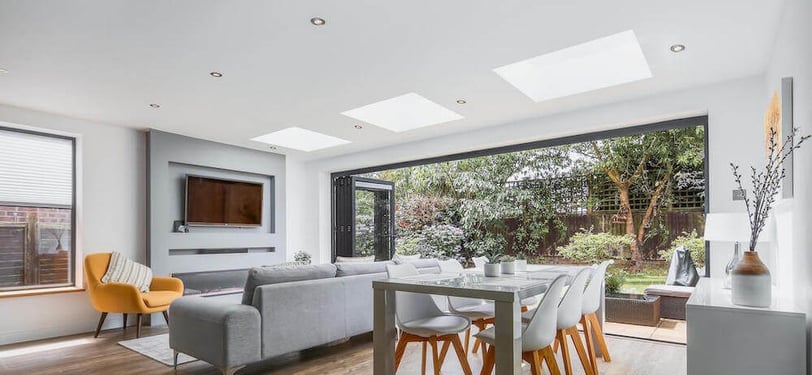Rear Extension UK Guide 2025 – Best Designs, Costs & Planning Rules
5/19/20253 min read


Rear Extension UK: A Comprehensive Guide to Transforming Your Home in 2025
Are you seeking to increase your living area without the inconvenience of relocation? A rear extension might just be the solution you need. In the UK, more homeowners than ever are investing in rear house extensions to add light, space, and value to their properties. Whether you’re dreaming of an open-plan kitchen-diner or a tranquil home office, this blog will walk you through the best rear extension ideas, planning considerations, and design trends for 2025.
What Is a Rear Extension?
A rear extension is an addition built onto the back of an existing property. It’s ideal for semi-detached and detached homes with garden space to spare. These extensions can be single-storey or double-storey, depending on your needs and planning permissions.
Why Rear Extensions Are Popular in the UK:
Maximise garden-facing space
Create modern open-plan interiors
Enhance natural light through skylights and bi-fold doors
Increase home value by up to 20% in some areas
Top Rear Extension Ideas for 2025
Home design trends in 2025 are all about blending functionality with aesthetics. Here are some leading rear extension design ideas tailored to the UK market:
Open-Plan Kitchen-Diner with Skylights
One of the most popular rear extensions, especially in London and the South East. Incorporate large roof lights or lanterns to flood the room with daylight.
Rear Lounge with Crittall-Style Doors
Crittall doors continue to trend, giving homes an industrial-chic vibe while providing panoramic views of your garden.
Home Office or Studio
With hybrid working becoming a norm, rear extensions now often include fully insulated workspaces with soundproofing and built-in storage.
Rear Orangery or Garden Room
For heritage or period properties, a rear orangery adds elegance while respecting architectural traditions.
Wraparound Rear + Side Return
Combine a rear extension with a side return to drastically expand narrow kitchens, typical in Victorian terraces.
Do You Need Planning Permission for a Rear Extension in the UK?
Good news! Many rear extensions fall under Permitted Development Rights, especially if you follow these key guidelines:
Single-storey can extend up to 6 metres for semi-detached or 8 metres for detached homes (subject to prior approval).
The extension should not occupy more than 50% of the land surrounding the original house.
The materials used must look like the home that is currently there.
Maximum height of 4 metres for a single-storey rear extension.
Note: If your property is in a conservation area, national park, or AONB, you may face additional restrictions and need full planning permission.
Building Regulations for Rear Extensions
Regardless of planning permission, your rear extension must comply with UK Building Regulations, including:
Structural integrity
Fire safety
Ventilation
Energy efficiency
Drainage and waste management
A building inspector will need to approve work at several stages to ensure full compliance.
Costs of Rear Extensions in the UK (2025)
Costs can vary depending on location, size, and materials. On average:
Single-storey rear extension: £1,800–£2,500 per square metre
Wraparound extension: £2,200–£2,800 per square metre
Double-storey extension: +50% more than single-storey
Tips for a Successful Rear Extension Project
Hire a local architect or design-build team who understands UK regulations.
Get a detailed structural survey and soil test before building.
Choose energy-efficient glazing and insulation to meet Part L standards.
Use natural materials like timber and lime render to stay on-trend in 2025.
Incorporate smart home technology (lighting, heating, security) into the design.
Plan for garden landscaping post-build to create a harmonious transition from indoor to outdoor space.
Is a Rear Extension Right for You?
If your goal is to stay in your neighbourhood while improving your lifestyle and increasing your home’s value, a rear extension is a strategic investment. It's one of the most flexible and rewarding types of home improvement projects for UK homeowners.
Final Thoughts
From contemporary glass-box extensions to classic brick builds, rear extensions in the UK are an excellent way to reimagine your home in 2025. Make sure to start with proper planning, work with qualified professionals, and always ensure compliance with local building codes.
Need help with your rear extension project? Contact our experts today for a free consultation.